FREE shipping on orders over $49!* Details
Pool Pumps and Filters
9 Results
Sort by:
Price
9 Results
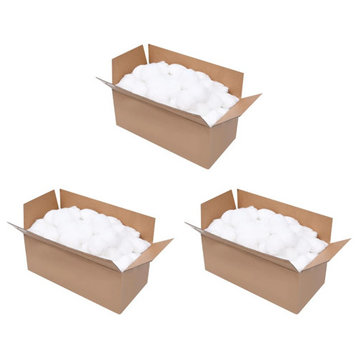
vidaXL Filter Balls Filter Balls for Sand Filter Pool Filter Media Balls PEby vidaXL LLC
$118
Free Shipping
- With the pack of filter ball, you can filter out the smallest impurities in the water, which will bring your clean and comfortable swimming pool back!
- Durable material: Made of PE, the water filter has a long life, lighter and more efficient than the traditional filter media.
- Reusable design: Being 100% reusable, the swimming pool filter can be cleaned by machine or hands.
- Convenient usage: Just pour them onto the machine to start filter, the pool filter balls are easy to use, but bring an efficient result.
- Color: White
- Material: 100% Polyethylene
- Volume: 4.6 lb
- Diameter: 2"
- Equals 165.3 lb pool filter sand
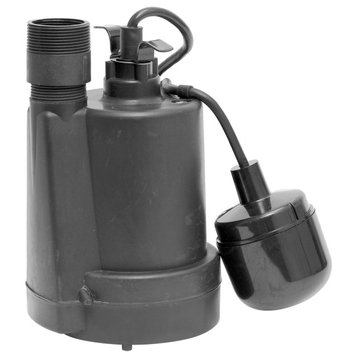
Superior Pump 92330 Thermoplastic Sump Pump With Tethered Float Switch, 1/3 HPby Superior Pump(27)
$132
Free Shipping
Highlights:
- 1/3HP split capacitor motor
- High efficiency, low Amp draw
- 10' grounded waterproof cord, pumps up to 40 gallons per minute, 2400 gallons per hour
- Side and bottom intake provides for clog resistant suction
- Tethered float switch with piggy back plug included
- Cooler operating 115V motor provides continuous duty
- Pump will lift water over 25 ft. vertical height
- 1-1/4" male iron pipe discharge thread, 1-1/4" female pipe adapter and 1-1/2" male iron pipe adapter included
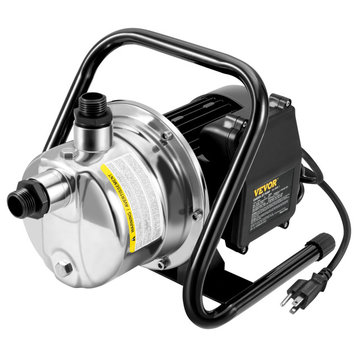
1.5HP Booster Water Jet Pump Shallow 1" Portable Water Jet Pump 164ft Headby VEVOR
$124
Free Shipping
Features & Details
- 1.5HP Powerful Garden Pump: Max Pressure: 87 psi; Max Suction: 26.2 ft; Inlet/Outlet Dia.: NPT 1". This shallow well pump has a powerful 1.5HP motor, providing 1200 GPH max flow and 164 ft max head. It comes with two hose adapters for easy use. Pump out your worries with ease and relax. No challenge is too big for you. NOTE: Fill the pump head with water before use.
- The Real Deal Stainless Steel: Are you tired of replacing your old pumps? You deserve a pump that can stand up to the test of time! Our lawn sprinkler pump is constructed with a stainless steel pump head and cast aluminum housing. You don't have to worry about it becoming rusted or corroded after long-term use. The high-strength structure ensures non-leakage against wear and tear. Bring on the harsh conditions and let your motor roar!
- Authoritative ETL Certified: We always focus on the approval standards of our products. This stainless steel portable sprinkler pump has passed the ETL certification, promising reliable quality and excellent performance. With IPX4 waterproof grade, there is no fear of water splashes, and the internal motor is fully protected. Stop wasting time! The perfect choice is in front of you!
- Take It Anywhere: Where there is water, there is a pump. Effortlessly move your pump to any water source hassle-free! The lawn irrigation pump is designed with an easy-to-carry iron handle for portable use. It can work as a sprinkler pump, a well pump, or a booster pump, perfect for irrigation, water transfer, and drawing water from shallow wells, ponds, lakes, rain barrels, water tanks, etc. NOTE: It works only with CLEAN WATER and is unsuitable for drinking water.
- Peace of Mind Operation: Security is always our top priority. The low-noise, energy-efficient motor features built-in thermal and overload protection to prevent overheating and burning. You have nothing to worry about! A waterproof on/off switch is designed for safe and easy operation, avoiding accidental startups. This sprinkler pump also has large cooling vents for efficient heat dissipation.
Specifications
- Model: XKJ-1105S
- Material: Stainless Steel + Cast Aluminum
- Handle Material: Iron
- Power: 1.5HP/1100W
- Voltage: 115V/60Hz
- Max Flow Rate: 1200 GPH (4.5 m³/h)
- Max Head Lift: 164 ft/50 m
- Max Suction Height: 26.2 ft/8 m
- Max Pressure: 87 psi/6 bar
- Current: 10A
- Max Speed: 3450 RPM
- Inlet/Outlet Diameter: NPT 1"/2.5 cm
- Certification: ETL
- Waterproof Grade: IPX4
- Insulation Class: F
- Max Liquid Temp: 95℉/35℃
- Cable Length: 6.6 ft/2 m
- Product Size (L x W x H): 15 x 9.4 x 9.8 in/38 x 24 x 24.8 cm
- Product Weight: 24.7 lbs/11.2 kg
- Package Content
- 1 x Shallow Well Pump
- 1 x 6.6 ft Cable with US Plug
- 2 x Garden Hose Adapters
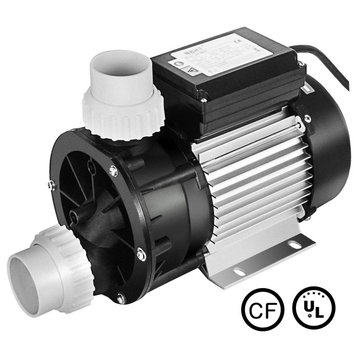
Swimming Pool Pump SPA Bath Hot Tub Water Circulation Pump, 370 Wby VEVOR
$72
Free Shipping
Feature & Details
- Premium Swimming Pool Pump: The self-priming pool pump has brilliant performance. It is suitable for pools of up to 80,000 liters and can serve you for long time.
- 0.5 HP Copper Motor: The swimming pool pump is equipped with a pure copper motor for high efficiency, low noise, and long service time. The pool pump power: 370W/0.5 HP, capacitance: 15 µf, Amps: 3.5 A, voltage: 110V/60Hz, security rating: IPX5.
- Superior Performance: The pool pump has a maximum head lift of 27.9 ft and a maximum flow rate of 270 L/min. It can meet all your daily needs.
- Secure Design: The housing of the pump is made of sturdy ABS and aluminum material, durable and corrosion-proof, for avoidance of the motor and internal device damage. Moreover, the pump is designed with a built-in thermal overload protector for security.
- Versatile Uses: The in-ground pool pump can be used on many occasions for providing high-efficiency water circulation and crystal clear water, such as swimming pool, bathing pool, landscaped pool, spa, etc.
Specifications
- Model: DH 370
- Rated Power: 370W / 0.5HP
- Voltage/Frequency: 110V/60Hz
- AMPS: 3.5A
- Capacitance: 15 µf
- Max. Pump Rate: 270 L/ min
- Head MAX: 27.9 ft/8.5 m
- Speed: 3450 r/min
- Max. Temperature: 50°C/122°F
- Security Rating: IPX5
- Drive: Electric
- Fittings Connections: 2" /50 mm
- Length of Cable: 4' /1.2 m
Noise Level:
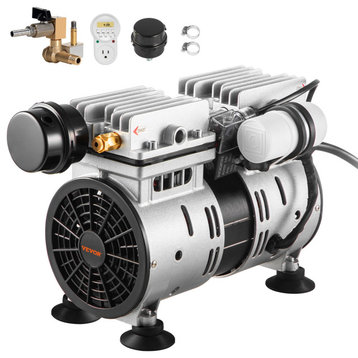
VEVOR Pond Aerator Lake Pond Aeration Kit 3/4 HP 550W 5.2CFM for Up to 3 Acreby VEVOR
$192
Free Shipping
5.2 CFM Pond Aerator
If you are looking for an efficient tool to keep your pond or lake healthy and clean, don't hesitate to choose the VEVOR pond aeration system. Our aerator can easily handle ponds that are 3 acres and 50' deep. Get ready for flawless and more beautiful water! Complete accessories make it easy to use and install. Our reliable materials ensure long-lasting use. It is ideal for removing foul odors, reducing algae growth and bottom muck, and protecting fish. Start creating a healthier ecosystem with VEVOR today!
Powerful and Quiet Operation: Power: 550W; Horsepower:3/4 HP; Max. CFM: 5.2. Our pond aeration system features an efficient oil-free air compressor, aerating ponds up to 3 acres, 50 ft deep. Your ponds are about to look brand new this year! The rubber compressor mounts reduce noise and vibration for a 65dB silent continuous and low noise operation. There is no need to worry about working efficiency either.
High-quality and Convenient Timer: Are you worried about having to stare at your pond all day? Go ahead and enjoy the things you want to do! The pond aerator kit is equipped with a timer to allow you to set the opening and closing time independently, saving energy and consumption. You can regularly adjust the working time of the aeration system according to weather conditions, ensuring enough oxygen and protecting the motor.
Amazing Accessories: This lake aerator comes with an air compressor, a timer outlet, and all necessary fittings. The valves, including the pressure relief valve, check valve, and electromagnetic valve, are all designed for security use and prolong the motor's working life. Get ready to fall in love with your pond again!
Hassle-free Installation:The installation can't be easier, thanks to the clear user manual. Our pond aerator system is durable, reliable, and low maintenance. It is suggested to put the compressor in a ventilated place and sheltered from rain and sunshine. These precautions will lead to less dust and prolong the life of your machine.
If you are looking for an efficient tool to keep your pond or lake healthy and clean, don't hesitate to choose the VEVOR pond aeration system. Our aerator can easily handle ponds that are 3 acres and 50' deep. Get ready for flawless and more beautiful water! Complete accessories make it easy to use and install. Our reliable materials ensure long-lasting use. It is ideal for removing foul odors, reducing algae growth and bottom muck, and protecting fish. Start creating a healthier ecosystem with VEVOR today!
Features and Details
Let Your Pond Breathe: Are you suffering from pond and lake problems related to excessive algae growth, fish dying, and muck accumulation? Well, say goodbye to those troubles of the past! Our pond aerator is designed to reduce pond muck, improve water quality, boost dissolved oxygen, and protect fish. It will help you restore lakes and ponds naturally. Get ready to rejuvenate your pond and lake!Powerful and Quiet Operation: Power: 550W; Horsepower:3/4 HP; Max. CFM: 5.2. Our pond aeration system features an efficient oil-free air compressor, aerating ponds up to 3 acres, 50 ft deep. Your ponds are about to look brand new this year! The rubber compressor mounts reduce noise and vibration for a 65dB silent continuous and low noise operation. There is no need to worry about working efficiency either.
High-quality and Convenient Timer: Are you worried about having to stare at your pond all day? Go ahead and enjoy the things you want to do! The pond aerator kit is equipped with a timer to allow you to set the opening and closing time independently, saving energy and consumption. You can regularly adjust the working time of the aeration system according to weather conditions, ensuring enough oxygen and protecting the motor.
Amazing Accessories: This lake aerator comes with an air compressor, a timer outlet, and all necessary fittings. The valves, including the pressure relief valve, check valve, and electromagnetic valve, are all designed for security use and prolong the motor's working life. Get ready to fall in love with your pond again!
Hassle-free Installation:The installation can't be easier, thanks to the clear user manual. Our pond aerator system is durable, reliable, and low maintenance. It is suggested to put the compressor in a ventilated place and sheltered from rain and sunshine. These precautions will lead to less dust and prolong the life of your machine.
Specifications
- Model: OLF400D-140BS-A
- Voltage: 120V
- Power: 3/4 HP/550 W
- Max CFM: 5.2
- Max Pond Size: 1-3 Acres
- Noise Level: 65 dB
- Air Compressor Size: 8.9 x 6.3 x 8.5 in / 25.5 x 16 x 21.5 cm
- Package Content
- 1 x Air Compressor
- 1 x Timer
- 1 x User Manual
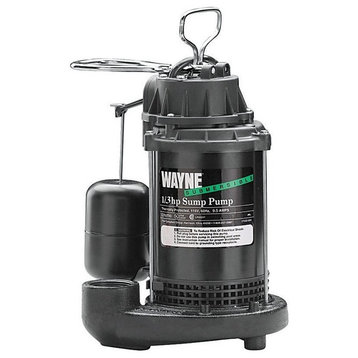
Wayne® CDU790 Cast Iron Submersible Sump Pump with Vertical Switch, 1/3 HPby Wayne Water Systems(65)
$234
Free Shipping
Used to remove ground water from sump pits. The most common application is for basement drainage to prevent flooding in residential buildings. Designed to pump clear water. Top suction design filters debris & minimizes clogging. Designed for easy installation without any plumbing changes.
*1/3 HP; max. flow rate is 3800 Gallons Per Hour at 0' of discharge lift
*For use in 11 in. diameter or larger sump basins
*1/3 HP; max. flow rate is 3800 Gallons Per Hour at 0' of discharge lift
*For use in 11 in. diameter or larger sump basins
- Top suction pump design eliminates air locks and clogging from debris in bottom of sump pit
- Fully submersible
- 1-1/2 in. NPT discharge for standard plumbing installation
- Epoxy coated steel
- Durable construction materials
- Easy carry handle for portability
- Float guard protects switch from hang ups.
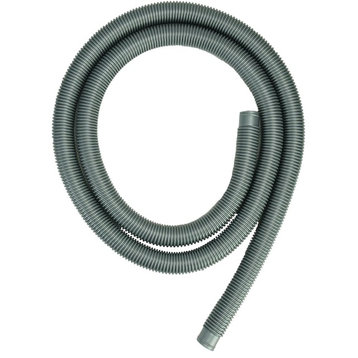
Heavy-Duty Silver Pool Filter Connect Hose - 9' x 1.25"by Northlight Seasonal(119)
$31
- Silver pool hose with integrally molded leak-proof cuffs
- Easy installation
- Highly flexible yet extremely strong
- Ideal for above ground pools and filter pumps that use 1-1/2" hoses and hose connections
- Durable heavy-duty corrugated design to resist kinking and scuffing Dimensions: 108" long x 1.25" diameter
- Material(s): PVC
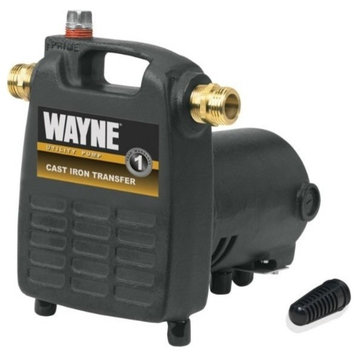
Wayne® PC4 Portable Cast-Iron Portable Utility Transfer Pump, 1/2 HPby Wayne Water Systems(46)
$260
Free Shipping
Typical applications for these portable pumps include removing standing water off basement floors or construction sites, draining aquariums, emptying window wells, hot tubs, wading pools and crawl spaces, or boosting water pressure for cleaning jobs around the house. 1/2 HP 115-volt transfer water pump can pump water out of flooded basements, tanks, or boats. It can also increase line pressure by up to 40 pounds or be used to water lawns and gardens, and can even be used to wash cars and sidewalks.
- Pumps up to 1450 GPH @ 0'(40 PSI)
- Boosts line pressure up to 40 PSI
- Rugged, cast iron pump housing and motor for durability with easy-priming outlet
- Easy-carry cast iron handle for portability
- Portable transfer pump you can take anywhere
- 3/4" brass hose adapters connect to standard garden hose
- High performance 1/2 HP motor
- Reinforced thermoplastic suction strainer included.
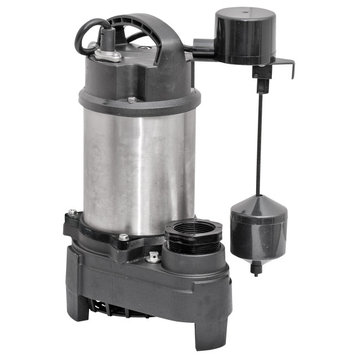
Superior Pump 92751 3/4 HP Sump Pump, 7.5 Ampsby Superior Pump(10)
$298
Free Shipping
Highlights:
- HP: 3/4
- Amps: 7.5
- Construction: Stainless Steel and Cast Iron
- Switch Type: Vertical
- Discharge Type: Side
- Cord Length: 10'
- Solids Handling: 1/2"
- Impeller Type: Thermoplastic
- 1-1/2" NPT adapter included
- Large 2" discharge for high capacity pumping
- Clog ristant thermoplastic vortex impeller
- Pumps will lift water up to 25' of vertical height
- Can be used as a utility pump by removing the float switch
A thrilling dive into a placid pool of water can be cut short by the lack of a proper filtration and pump system. No swimmer wants to jump into water whose smooth surface is marred by dead leaves, drowned insects and floating debris. To keep your swimming pool or hot tub as clean as a glass of drinking water, you’ll need a properly sized pool pump and matching filter.
If you’ve already begun browsing through pool pumps, you may have noticed a few terms that keep reappearing. These terms are important to know and will help you choose the proper pump and filter for your swimming pool or hot tub.
Selecting the right size pump is important. If the turnover isn’t right, you may end up straining the system or costing yourself more than necessary when it comes to energy bills. You’ll need a measuring tape and possibly a calculator to determine these measurements.
* All measurements should be made in feet.
Now that you’ve had your math whiz moment, it’s time to decide what type of pool pump works best for you. The three different types of pumps include:
Choosing the right filter is extremely important. With the wrong filter, your pool’s plumbing system could become damaged, resulting in expensive repairs. If you’ve already calculated your pool’s flow rate, you’re well on your way to determining the right type of filter.
Once you’ve found the correct flow rate, choosing a pool filter mainly comes down to price and performance over time. Keep an eye out for the following types of filters:
6 key terms you should know when choosing a pool pump.
If you’ve already begun browsing through pool pumps, you may have noticed a few terms that keep reappearing. These terms are important to know and will help you choose the proper pump and filter for your swimming pool or hot tub.
- GPM: GPM stands for Gallons Per Minute. This measurement will tell you how many gallons of water per minute your pump can process.
- Flow rate: The flow rate is measured in GPM and specifies the number of gallons your pool pump can process in a certain amount of time, usually minutes.
- Head: Head is usually measured in “feet of resistance” or “feet of head.” This measurement tells you how much resistance is created by your hot tub or pool’s plumbing system.
- Pool capacity: This number identifies the volume of water that can be found in your pool. See the 2nd step in the section below, “6 measurements to determine the right pool pump size,” to determine your hot tub or pool’s capacity.
- Resistance: This measurement tells you how much resistance to the water flow your plumbing system will create.
- Turnover: The turnover rate will tell you how quickly or slowly the plumbing system will take to cycle all of the water through your filter. In general, most pools require a turnover of 6 to 8 hours. You should aim to meet or exceed the minimum turnover required for your pool while using as little energy as possible.
4 measurements to determine your pool pump size.
Selecting the right size pump is important. If the turnover isn’t right, you may end up straining the system or costing yourself more than necessary when it comes to energy bills. You’ll need a measuring tape and possibly a calculator to determine these measurements.
* All measurements should be made in feet.
- Average depth: (Shallow end depth + deep end depth) / 2
- Capacity: The proper equation is determined by your pool’s shape.
Circular: Diameter x diameter x average depth x 5.9 = capacity in gallons
Oval: Long diameter x short diameter x average depth x 6.7 = capacity in gallons
Rectangular: Length x width x average depth x 7.5 = capacity in gallons
Kidney: (Longest width + shortest width) x length x average pool depth x 3.38 = capacity in gallons - Flow rate: (Capacity in gallons / 8) / 60 = flow rate in GPM
- Average feet of head: Identify where your suction lines are and determine the average number of feet from each suction line to where the pool pump will be located.
Total line length / number of lines = average feet of head
3 types of pool pumps and how to choose the right one for you.
Now that you’ve had your math whiz moment, it’s time to decide what type of pool pump works best for you. The three different types of pumps include:
- 2-speed: This model operates at a low speed for filtration and a high speed for cleaning. You’ll also need an automatic controller.
- 4-speed: These tend to be programmable, meaning you can alter the pump speed depending on what needs to be done. This adaptability makes a 4-speed pump a great choice for pools that need a variable rate of flow.
- Variable-speed: These are your most efficient choice but also tend to be the most expensive. They feature more than 4 speeds and can be programmed to run at the ideal speed for each application.
3 steps to finding your pool filter flow rate.
Choosing the right filter is extremely important. With the wrong filter, your pool’s plumbing system could become damaged, resulting in expensive repairs. If you’ve already calculated your pool’s flow rate, you’re well on your way to determining the right type of filter.
- Step 1. Find the filter manufacturer’s effective filtration area and design flow rate.
- Step 2. Multiply the effective filtration area by the design flow rate to determine the filter’s flow rate.
- Step 3. Compare the filter’s flow rate to the flow rate required by your pool. It’s best to choose a flow rate that’s faster than necessary — especially since the filter’s flow rate will slow down as it’s being used.
The 3 types of pool filters and how you can choose the right one.
Once you’ve found the correct flow rate, choosing a pool filter mainly comes down to price and performance over time. Keep an eye out for the following types of filters:
- Cartridge: This style uses a pleated, fabric-like material to remove particles as small as 10 to 20 microns. Cartridge filters can simply be removed and sprayed down with water to clean them. They will, however, need to be replaced every 2 to 5 years. This can add up in cost, but no water or chemicals will be wasted during the cleaning process.
- Diatomaceous Earth (DE): Though they’re your most expensive choice, a DE filter is highly efficient and can filter out particles as small as 1 to 3 microns. The filter itself is made from grids filled with diatomaceous earth powder. Along with backwashing the filter to clean it, you must also reapply new diatomaceous earth each time the filter is cleaned.
- Sand: The most common type, a sand filter is also the least expensive. Though they perform just as well as cartridge or DE filters, they cannot filter on the same microscopic level as these other two styles. Pool filter sand is a special size —.45 mm to.55 mm — and is able to sift particles that are 20 to 40 microns large. Cleaning the filter is simple. All that’s required is reversing the flow of water to backwash the system. This process does, however, waste water and chemicals.






